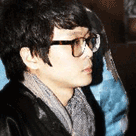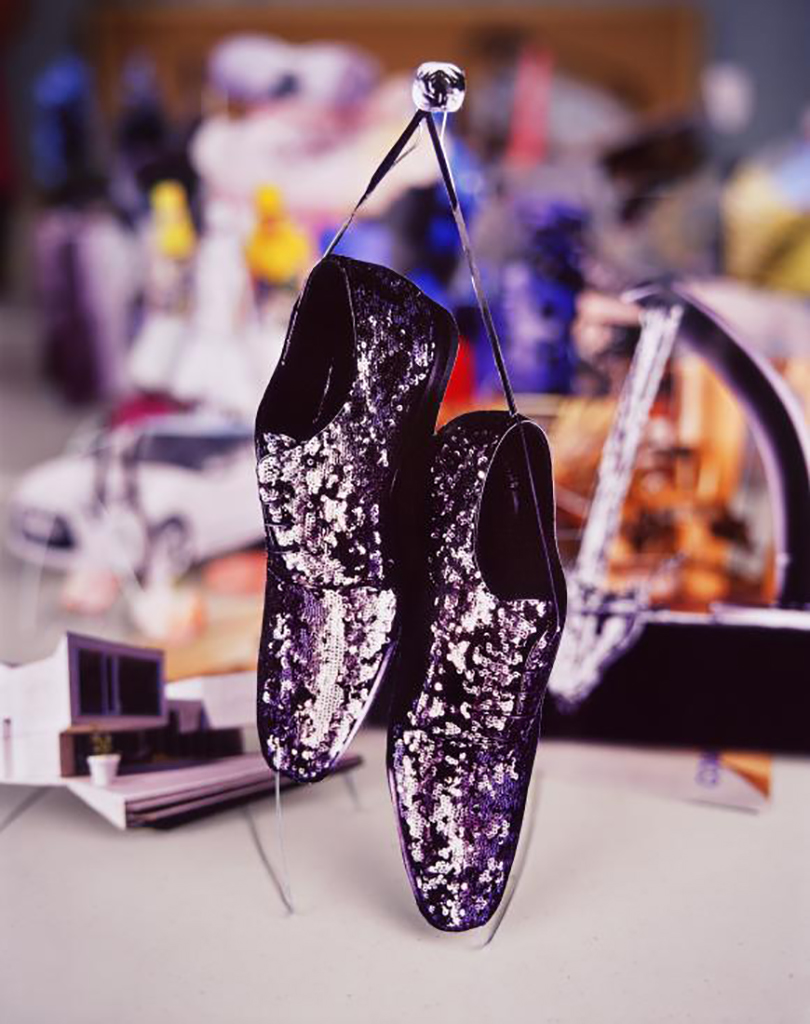Gwon Osang is the masterminid behind photography sculpture. He is also very good ar asking questions. They say answers lie embedded within the question itself. The fundamental question Gwon asked about sculpture brought about a radical answer that would shake the art world's foundation. That was what led to the beginning of new works of art him. What is most important here is that his questions come from his hands. They are not just abstract question, but a curiosity arising from the actual art of sculpting. Gwon Osang has gone back to the time before a sculptor's hands began disappearing ans asked fundamental questions. By doing so, he was able to subordinate other media, such as photography, magazine images, and things seen on the internet today, to their original sculpture-like qualities. It would seem Gwon Osang has always been a sculptor.

- **Gwon Osang/ Sculptor** Gwon was born in Seoul in 1974 and currently works in Seoul\. He earned an undergraduate degree from Hongik University’s Department of Sculpture in 2000 and a master’s degree from the same school in 2004\. In 1998\, he created three\-dimensional sculptures using photographs for the first time\, and made his artistic debut with an exhibition at Alternative Space Loop in 1999\. He held his first solo exhibition at Insa Art Space \(run then by the Arts Council Korea\) and an exhibition titled Deodorant Type\, which became the name of the photography sculpture series as a whole\. In 2003\, he released a simple sculpture series called The Flat in which he cut advertising pictures out of magazines and stood them up using wire\. Since 2002\, he has participated in numerous group exhibitions at museums around the world\. In 2006\, Gwon released a supercar series and motorbike torso series which are part of an academic still\-life sculpture entitled The Sculpture series\. The three series influence one another and have been released independently and in combination with one another\. Gwon has held solo exhibitions at Arario Gallery in Cheonan\, Seoul\, New York\, and Beijing as well as one at Manchester Art Gallery in 2008\.
The Birth of Photography Sculpture
Gwon Osang is the mastermind behind photography sculpture. He is also very good at asking questions. They say answers lie embedded within the question itself. A well thought-out question brings about a satisfying answer. In contemporary art, three-dimensional art has been expanded into various fields such as objects, installations, media art, and concept art, far beyond the traditional concept of sculpture. Materials used to also be separated into light, sound, text, and digital technology. And while the word "sculpture" seemed to disappear at some point for many, it is precisely because of radical questions raised by certain artists that one genre of art has not disappeared. The English word "radical" refers to something both fundamental and progressive. If you think about something fundamentally, you cannot help being radical. The fundamental question Gwon asked about sculpture brought about a radical answer that would shake the art world’s foundation. That was what led to the beginning of new works of art for him. What is most important here is that his questions come from his hands. They are not just abstract questions, but a curiosity arising from the actual art of sculpting. Gwon Osang has gone back to the time before a sculptor's hands began disappearing and asked fundamental questions.
By doing so, he was able to subordinate other media, such as photography, magazine images, and things seen on the Internet today, to their original sculpture-like qualities. It would seem Gwon Osang has always been a sculptor.
Gwon Osang started his “deodorant type” photograph sculpture while still in university. His aim was clear. While sculptors in the 1990s were into the extended possibility of installation, his questions remained classical and precise, asking, “Why are sculptures heavy?”; “Is a light-weight sculpture possible?” To create a light-weight sculpture, he used photographs. This is how deodorant type photograph sculpture was born. It started with shooting his subject from all possible angles, from head to toe. Dozens of prints are then pieced together over a pre-prepared framework, a life-size carved human body made out of Isopink, a compressed type of Styrofoam. Photographs can represent something or someone, but sculptures capture the same form in three dimensions. The conflict between the two genres raises interesting questions.
Although he borrowed the composition from classical art, Gwon does not feature any special story in his own art. With non-monumental, pop culture content, a certain contemporariness emerges yet again. Although I said classical sculpture pursues universality, both Bernini's work and Permoser’s are not universal to those of us living in the 21st century; they just feature telltale cultural signs of the time in which they were created. Gwon's work is completely a reflection of our age in terms of sensibility and format. Various poses that appeared in his former work were actually the poses of models from fashion magazines. But, he says, "While emulating fashion poses from magazines, I found they were rooted in the poses of classical sculptures. I wanted to search for the context behind this." Photography delivers a model's present image, exactly as it is, to Gown’s sculpture.
Recently, Gwon has been able to reveal a contemporary sense in his images. For his sculpture of British painter David Hockney (2012), he didn't take Hockney's picture himself, but instead used images that he downloaded from the Internet. While attempting to turn 2D images into 3D sculptures, Gwon used a number of photographs taken by others from different angles. Interestingly, a number of different photographs, ranging from when Hockney was in his 20s to today (he’s now in his 70s), were used for one single sculpture of the British artist.
Creating a Flat Sculpture

Gwon Osang_2010 March_Lightjet print, wood frame_231.5x186cm_2011
All the objects that he chose to photograph were luxury goods which stimulated one’s desire to possess. Each was shiny and with a strong visual attraction. Among them, Flat #16, #17, #18 represented a collection of gem ads that had appeared in the magazine Noblesse for six years. The gorgeous images enticed the reader. In this particular magazine edition, published around the Asian financial crisis in 1997, there were those who expected people’s desire for material goods to increase. It was at this time that a contemporary feel invaded his work once again. Gwon’s recent works show images borrowed from the design/interior design magazine Wallpaper. This became a foothold for him to move forward to the next stage, one in which he carried out his work not with people but with objects. To him, another question occurred: "Why isn't there any still-life sculpture in contemporary art?"
Still-life Sculptures - The Sculpture
Gwon reconstructed high-end cars and motorcycles, such as Lamborghini and Ducati, with his own hands. He first focused on the quality of contemporary art in luxury goods. A certain luxury car is said to have been designed to reach 2056km/h with a rocket engine, but in truth, there is almost no place in the world where one can drive a car at that speed. Gwon believed that just as contemporary art drives toward absolute self-finality, this luxury car only races toward a self-finality called speed. Although he owned a Ducati motorcycle, Gwon made a 3D structure of the bike by using images he downloaded from the Internet. Translating 2D images into 3D sculpture also influenced his recent method of performing photography sculpture with Internet-downloaded images.
"Art is all sculpture. Sculpture can be created from anything. There is nothing dangerous in art. Since Duchamp, everything is about the freedom of an artist and anything goes. All my works are a means toexecute the work of a sculptor," Gwon says. Although he works in a way that is unfamiliar to many – photography sculpture and still-life sculptures – sculpting materials and models’ poses were always pressing concerns for him. A sculptor from head to toe, someone who worries about only what a sculptor can, like the thoughts one may have during the process of creating sculptures only he can, has made him what he is today. Indeed, Gwon Osang is an artist who thinks using his hands, a very rare case in our times. Gwon Osang will always be a sculptor.
[Photo courtesy of Gwon Osang]

Lee Jin-sook / Art Critic
Lee received her bachelor’s and master’s degrees at Seoul National University’s Department of German Language & Literature. She received another master’s degree dealing with Kazimir Malevich at the Russian State University for the Humanities’ Division of History of Art. She runs the programs “Between Russian Art and Literature” and “A Thematic History of Western Art” and teaches at Dongduk Women’s University, Yonsei University, and Chung-Ang University. She regularly contributes to columns such as “Lee Jin-sook and Artists of Our Era” (Monthly Top Class) and “Lee Jin-sook’s In-depth Reading of Art Books” (Joongang SUNDAY). She is the author of the Russian Art History (Minumin, 2007), an introduction to Russian painters, The Big Bang of Art (Minumsa, 2010), a criticism on young Korean artists, and a collection of art essays called Depending on Beauty.


